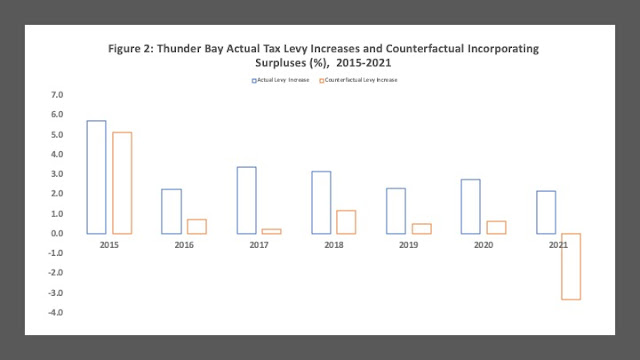Thunder Bay has embarked on a plan to build and diversify the municipal tax base and attract more residents. This plan for growth is seen as an imperative given that Thunder Bay’s economy while not shrinking in absolute terms is nonetheless growing less slowly than Ontario and Canada. For example, over the 2010 to 2024 period, Thunder Bay’s average annual real GDP growth was 1.8 percent compared to Canada’s 2 percent or Ontario’s 2.1 percent. Employment has also shown this differential given that between 2006 and 2024; Thunder Bay added 9 percent more jobs to its economy while Ontario and Canada both added about 27 percent more jobs.
So, the focus is on growth and a large part of that growth is on growing our population. Population growth is of course correlated with economic growth as more people usually means more economic activity and therefore a larger economy which in turn should spillover into growth of taxable assessment. This is a key concern for the City of Thunder Bay given that it is the anemic growth in taxable assessment that have helped shift an ever-larger tax burden onto the residential tax base given the decline in the industrial tax base of forest product mills and grain elevators over the last tree decades.
Of course, simply growing population in Thunder Bay is not the panacea that one might think when it comes to increasing taxable assessment. The reality is that population in the Thunder Bay area is increasing and has been for some time. However, the population of the City of Thunder Bay has not been increasing relative to its surrounding areas. If more people live around Thunder Bay but they are not owning homes and businesses within the confines of the City of Thunder Bay, then the impact on the city’s taxable assessment is going to be rather muted at best. As the accompanying figure shows, there is a difference between population growth in the City of Thunder Bay and the Thunder Bay Census Metropolitan area. Population statistics for the CMA are from Statistics Canada counts while the City of Thunder Bay’s population is taken from the Ontario Ministry of Municipal Affairs Financial Information Returns.
The results are plotted for the period 2001 to 2024 and are quite interesting. According to the official numbers compiled by the Ontario government, the City’s Thunder Bay’s population in 2001 was surprisingly just over 115,000 while the CMA population was about 126,000. During the first decade of the 21st century – the period of the forest sector crisis – the CMA population declined by 1.2 percent while the city proper itself declined by 5 percent. Since 2010, there has been growth in the CMA population going from 125,000 to 133,000 for an increase of 6 percent. The city population itself has gone from 109,140 in 2010 to 108,843 in 2023 – a slight decline. However, since 2016 – which is when population began to grow more robustly in the CMA, the city population has indeed grown by about 1 percent.
The point is that Thunder Bay is growing but not necessarily where the taxable assessment needs to be to broaden and diversify the municipal tax base. True, if the CMA population goes up, more businesses are likely to open in the city thereby expanding the business tax base, but a lot of growth is nevertheless occurring outside of the city boundaries. What is more interesting according to these numbers is the following. Between 2001 and 2023, the Ontario Ministry of Municipal Affairs numbers put Thunder Bay’s population going from 115,000 to about 109,000 – a decrease of about 5 percent. Municipal taxes per household have gone up from $1,947 dollars in 2001 to $4,070 in 2023 – an increase of over 100 percent - while water and sewer charges have gone from $379 in 2001 to $1,195 in 2023 – an increase of over 200 percent. Meanwhile, total municipal employment over the same period went from 2,344 (FT, PT and Seasonal) to 3,122 – an increase of 33 percent.
Is it any surprise that population outside of the city boundaries has grown while the city proper has either declined or remained stagnant? When choosing where to live in the Thunder Bay area, there has clearly been a substantial number of people voting with their feet. The surrounding townships offer a lower municipal tax burden while providing access to whatever Thunder Bay proper has to offer. If the City of Thunder Bay itself is to grow its population and economy, it will need to address the fundamentals that have fostered this shift outside the city.








